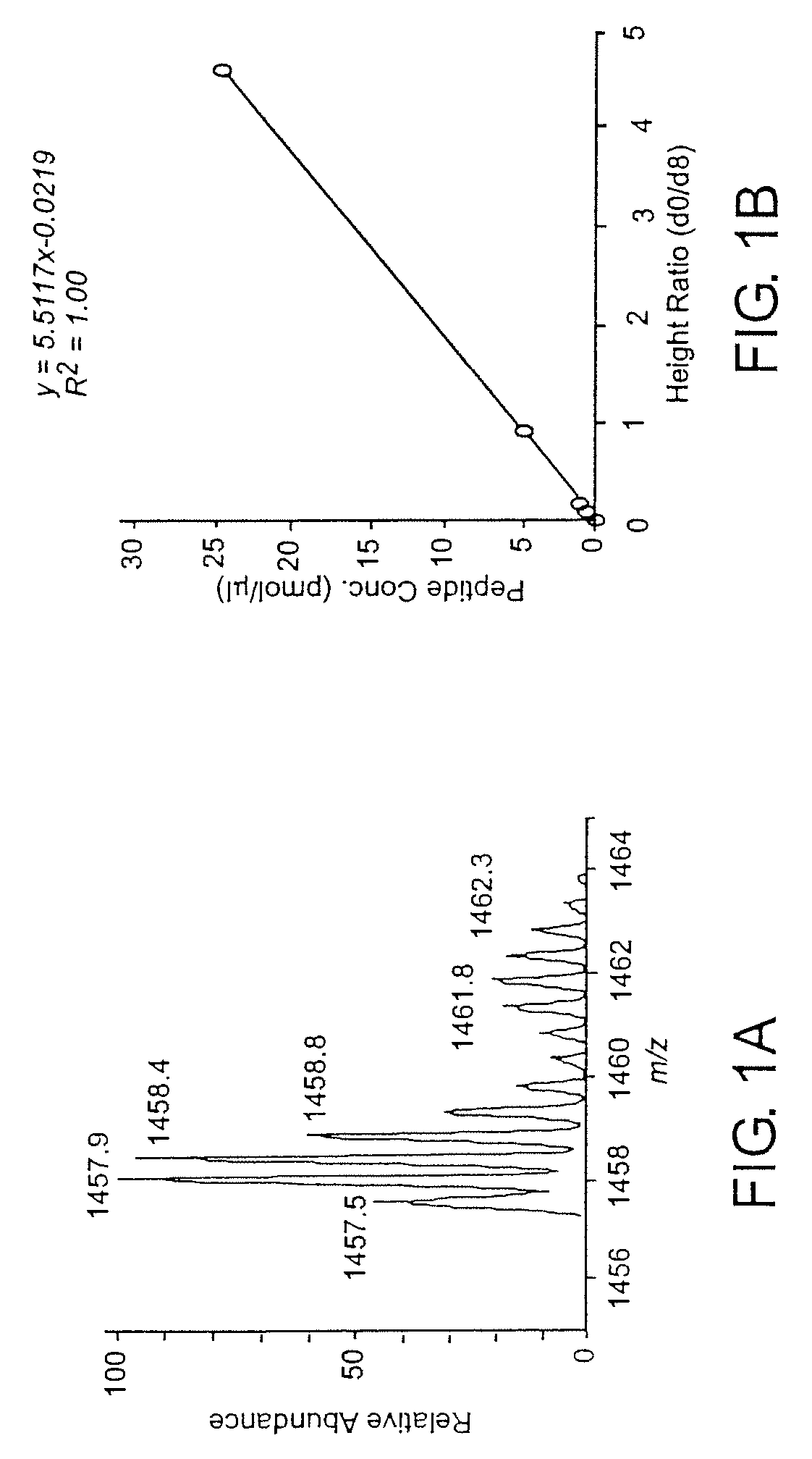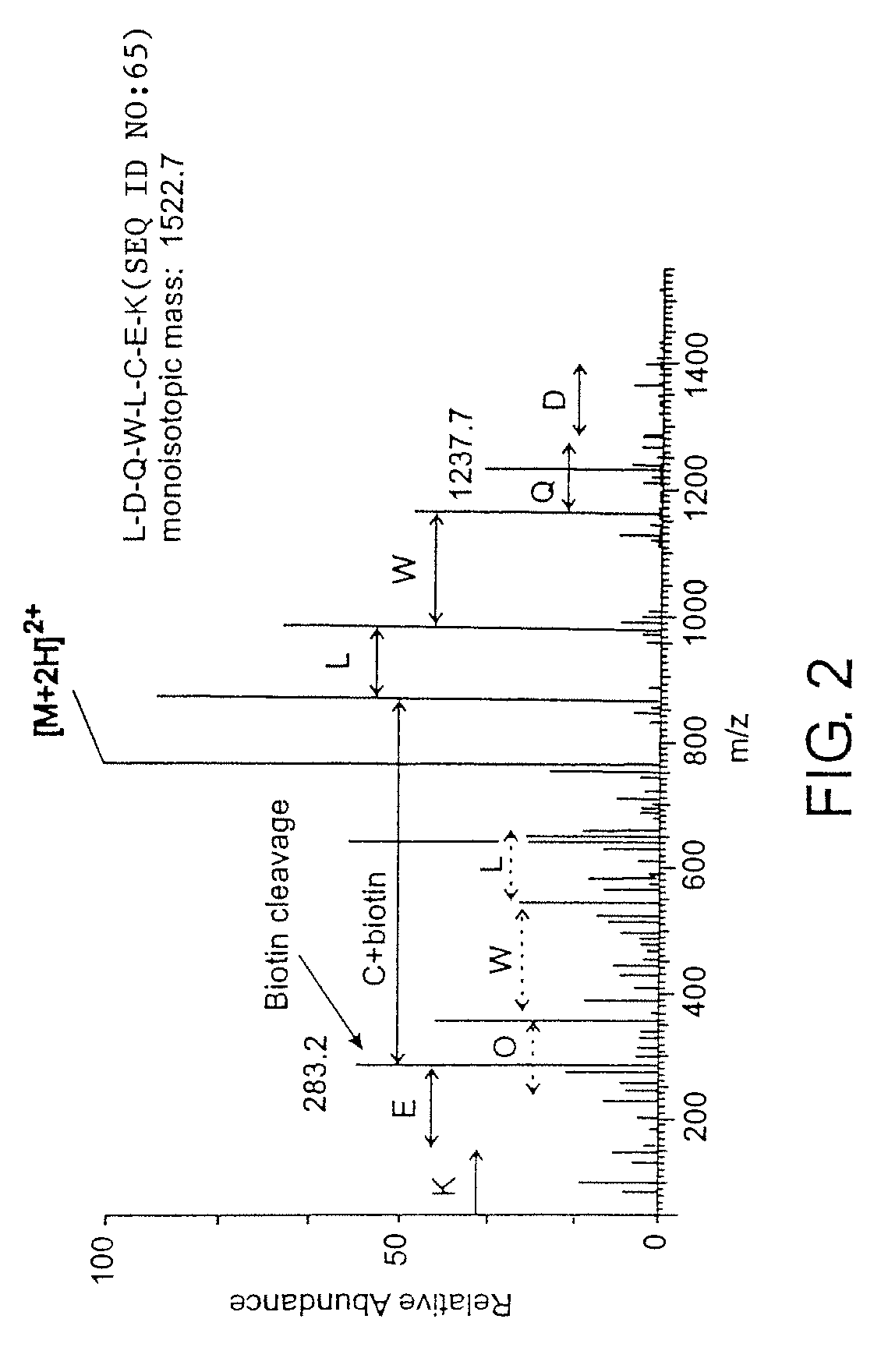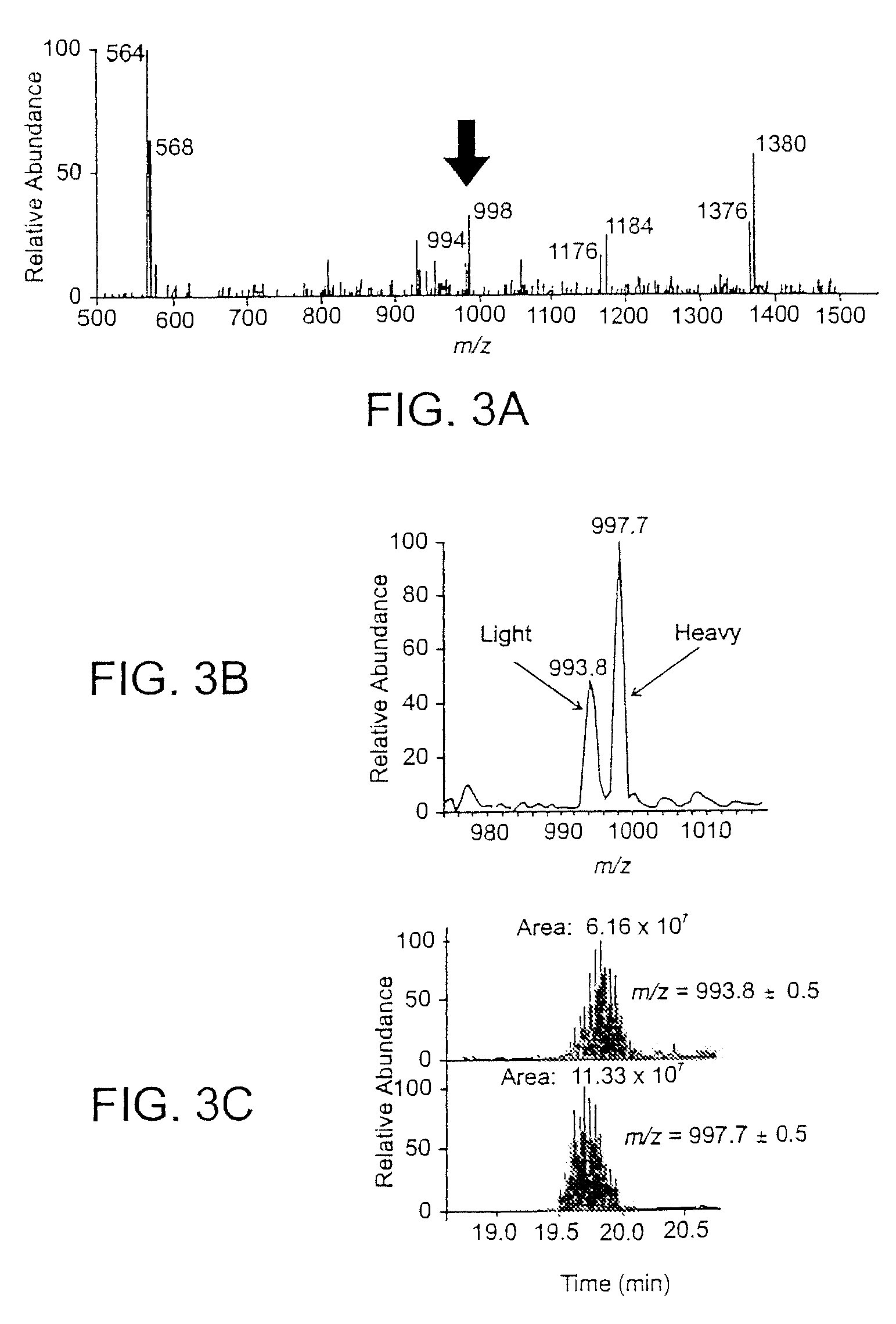Rapid quantitative analysis of proteins or protein function in complex mixtures
- Summary
- Abstract
- Description
- Claims
- Application Information
AI Technical Summary
Benefits of technology
Problems solved by technology
Method used
Image
Examples
Embodiment Construction
[0054]The methods of this invention employ affinity tagged protein reactive reagents in which the affinity tag is covalently attached to a protein reactive group by a linker. The linker can be isotopically labeled to generate pairs or sets of reagents that are substantially chemically identical, but which are distinguishable by mass. For example a pair of reagents, one of which is isotopically heavy and the other of which is isotopically light can be employed for the comparison of two samples one of which may be a reference sample containing one or more known proteins in known amounts. For example, any one or more of the hydrogen, nitrogen, oxygen or sulfur atoms in the linker may be replaced with their isotopically stable isotopes: 2H, 13C, 15N, 17O, 18O or 34S.
[0055]Suitable affinity tags bind selectively either covalently or non-covalently and with high affinity to a capture reagent (CR). The CR-A interaction or bond should remain intact after extensive and multiple washings with...
PUM
| Property | Measurement | Unit |
|---|---|---|
| pH | aaaaa | aaaaa |
| pH | aaaaa | aaaaa |
| mass | aaaaa | aaaaa |
Abstract
Description
Claims
Application Information
 Login to View More
Login to View More - R&D
- Intellectual Property
- Life Sciences
- Materials
- Tech Scout
- Unparalleled Data Quality
- Higher Quality Content
- 60% Fewer Hallucinations
Browse by: Latest US Patents, China's latest patents, Technical Efficacy Thesaurus, Application Domain, Technology Topic, Popular Technical Reports.
© 2025 PatSnap. All rights reserved.Legal|Privacy policy|Modern Slavery Act Transparency Statement|Sitemap|About US| Contact US: help@patsnap.com



